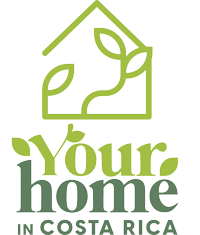Costa Rica’s breathtaking landscapes and Pura Vida lifestyle have made it a haven for expats seeking to build their dream homes amidst the lush greenery and serene beaches. However, embarking on a construction project in Costa Rica comes with its own set of considerations, including location, topography, design, and materials. In this blog post, we’ll delve into the factors that influence the cost of building in Costa Rica and provide an overview of the building process.
1. Location Matters: Accessibility and Climate
The location of your property plays a pivotal role in construction costs. Consider the accessibility of your lot. Are big trucks easily able to deliver materials, or will it require special arrangements? Additionally, the climate of the area should dictate your design choices. Building in a dry region may necessitate rainwater collection systems, while a wetter region could benefit from drainage solutions. You need to have reliable information about the water in the area.
2. Topography and Building Foundations
Costa Rica’s diverse terrain offers both challenges and opportunities. Sloped lots, for instance, may require more robust foundations to ensure stability. However, the trade-off is often stunning, open views and a sense of immensity that many find appealing. The topography of your lot will influence construction costs and the overall design of your home.
3. Your Dream House: Design and Materials
The house you envision plays a significant role in the overall cost. Factors such as height, the use of materials, and architectural complexity all impact your budget. Do you prefer a modern, minimalist design, or are you drawn to a more traditional Costa Rican aesthetic? Your choices will influence the final cost.
4. The Devil’s in the Details: Finishes and Weather Considerations
The finishes of your home are another cost factor. Choices such as windows, roofing materials, countertops, and flooring can significantly affect your budget. Moreover, it’s essential to build in line with the weather conditions of your chosen area. Coastal properties might require materials that can withstand saltwater corrosion, while high-altitude homes need insulation against cooler temperatures (yes, Costa Rica has areas with cold temperatures)
The Building Process in Costa Rica: 3 Key Stages
Building your dream home in Costa Rica involves three key stages:
1. Designing: The initial stage involves developing your home’s plans and design. This stage is highly individualized, as your vision and requirements will shape the process.
2. Building Permits: Acquiring the necessary permits can be a complex process. It’s crucial to work with local authorities to ensure your project complies with regulations.
3. Building the House: The construction phase can vary greatly depending on your project’s scope and complexity. High-quality contractors are essential, and a trustworthy project manager can streamline the process.
Soil Studies and Sustainability
While soil studies aren’t mandatory, they are highly recommended. Understanding your lot’s soil composition can prevent costly surprises during construction. Additionally, considering sustainability in your design, such as greywater and blackwater systems, can be both environmentally responsible and cost-effective in the long run.
Building your dream home in Costa Rica is a thrilling journey, but it’s vital to embark on it with careful planning and consideration. The right location, thoughtful design, and meticulous attention to details can help you achieve your vision within your budget.
As you embark on this adventure, remember that Costa Rica offers not just a house but a lifestyle that celebrates nature, community, and the essence of Pura Vida.

